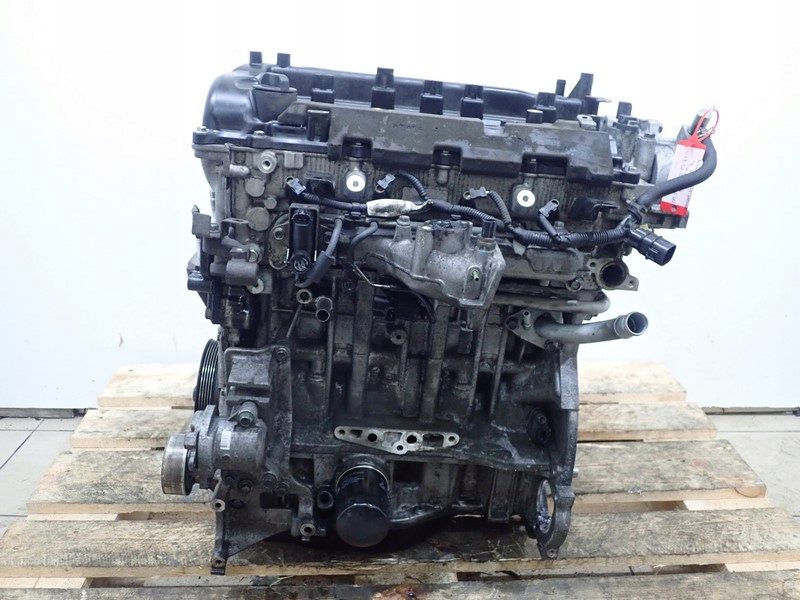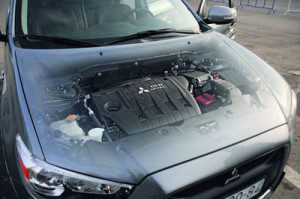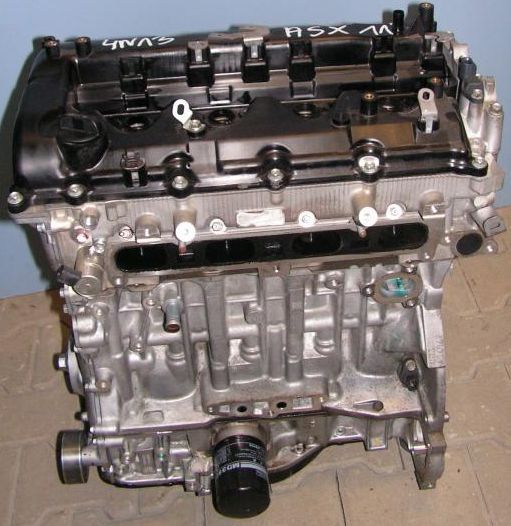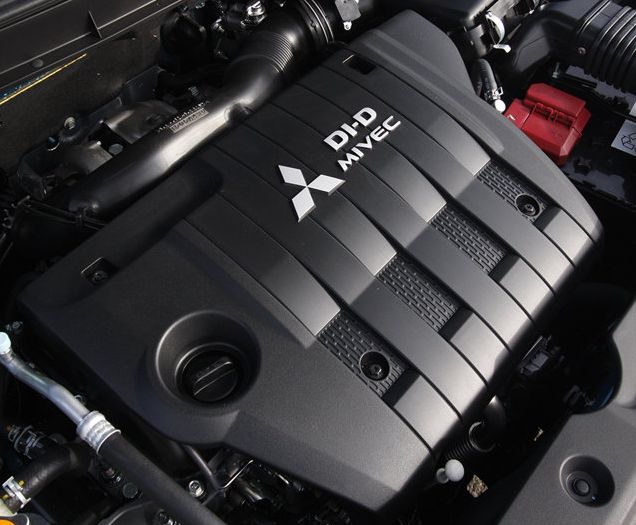
Engine Mitsubishi 1,8 DI-D (85, 110 kW) ―― 4N13
 In the 1,8s and 44s, Mitsubishi supplied 113-liter chamber diesel engines under the hood of cars of the lower and middle classes, which produced 55 kW (152 Nm), and supercharged - 2,0 kW (66 Nm), respectively. later 202 TD 2,0 kW (2,0 Nm). Although they were moderately fuel efficient, they were relatively noisy, uncultured compared to excellent petrol engines, and the dynamics of the naturally aspirated versions were not particularly inspiring. It is not surprising that the hole in the world was not eliminated, and the production of small diesel engines gradually faded into oblivion. Therefore, Mitsubishi decided to supply diesel fuel mainly for European models by purchasing from competitors, and therefore we witnessed how the 2,2 DI-D was hidden behind the 1,8 TDI PD from the VW Group and behind the XNUMX DI-D designation for PSA replacements. The popularity of diesel engines continues to grow in the small car class, where until recently gasoline engines clearly won out, so years later, Mitsubishi decided to again produce a relatively small modern diesel engine, this time under the designation XNUMX DI-D. .
In the 1,8s and 44s, Mitsubishi supplied 113-liter chamber diesel engines under the hood of cars of the lower and middle classes, which produced 55 kW (152 Nm), and supercharged - 2,0 kW (66 Nm), respectively. later 202 TD 2,0 kW (2,0 Nm). Although they were moderately fuel efficient, they were relatively noisy, uncultured compared to excellent petrol engines, and the dynamics of the naturally aspirated versions were not particularly inspiring. It is not surprising that the hole in the world was not eliminated, and the production of small diesel engines gradually faded into oblivion. Therefore, Mitsubishi decided to supply diesel fuel mainly for European models by purchasing from competitors, and therefore we witnessed how the 2,2 DI-D was hidden behind the 1,8 TDI PD from the VW Group and behind the XNUMX DI-D designation for PSA replacements. The popularity of diesel engines continues to grow in the small car class, where until recently gasoline engines clearly won out, so years later, Mitsubishi decided to again produce a relatively small modern diesel engine, this time under the designation XNUMX DI-D. .
The 1,8 DI-D lightweight aluminum four-cylinder engine belonging to the 4N1 group was jointly developed by Mitsubishi Motors and Mitsubishi Heavy Industries and manufactured in Kyoto, Japan. The first models were equipped with ASX and Lancer. Engines will be produced in the 2,3, 2,0 and described 1,8 liter categories. The unit has a divided aluminum block with dry iron inserts, while the crankshaft axis is offset by 15 mm relative to the cylinder axis. This solution reduces friction and also reduces vibration, thus eliminating the need for balance shafts. Larger engines are long-stroke, the 1,8 is almost square. The engine is lightweight, thanks to aluminum, as well as a plastic cylinder head cover. Weight is also reduced by a self-tensioning elastic belt driving the water pump, eliminating the need for a tensioner and pulley.
The injection was supplied by the Japanese company Denso. The Denso HP3 high pressure radial piston pump, supplied on many Japanese Toyota, Mazda and some Nissan diesel engines, regulates fuel rail pressure. However, in the case of 1,8 DI-D, it works with new pressures up to 2000 bar. From each piston, a separate high-pressure line leads to a ramp - rail, which evens out the pulsation and refines the adjustment. The nozzles are solenoid with overflow (2,3 DI-D - piezoelectric), have seven holes and are capable of producing up to nine injections in one cycle. Ceramic low voltage glow plugs help with cold starts.

An interesting design is offered by a turbocharger from Mitsubishi Heavy lndustries TF. It uses an eight-blade rotor instead of the conventional 12-blade rotor, which provides better airflow over a wider speed range. The geometry of the stator blades is vacuum controlled. In the case of the more powerful 2,3 liter engine, the variable blade geometry takes place not only on the exhaust side of the turbine, but also on the intake side of the compressor. This system, called Variable Diffuser (VD), helps to further improve the sensitivity of the turbocharger to varying engine operating conditions. It is a pity that today the turbocharger has not received such modern water-cooled bearings, which would significantly increase its service life, especially if these cars are equipped with a start-stop system.
Probably the most significant innovation is the use of variable valve timing and valve lift, which is the best for production diesel engines. The system is similar to the larger Mivec 2,4 petrol engine. The timing system is chain and sprocket driven and operates with hydraulically shifted intake rocker arms at 2300 rpm. In two stages, it not only extends the opening and travel of the intake valves at high speeds, but also improves the swirl of the intake mixture by closing one in each cylinder at low load. Closing one of the valves improves dynamic compression and engine starting. With this technology, the compression ratio was reduced to a very low value of 14,9:1. The low compression ratio reduced noise, improved detail, optimized boost, and reduced mechanical stress on the engine. Another advantage of the adjustable time is the simpler design of the suction channels, which no longer need to be specially shaped to achieve the swirl effect. Determination of the valve clearance is not carried out in the usual hydraulic way, but in order to reduce pump losses, the valves must be mechanically adjusted from time to time using pressure gauges.

The 1,8 DI-D engine is available in two versions: 85 and 110 kW. Both versions are equipped with a dual-mass flywheel and are complemented by a package for reducing fuel consumption, dubbed Mitsubishi from ClearTec. This package includes Start-Stop, electric power steering, smart battery charging, 0W-30 low viscosity oil and low rolling resistance tires. Of course, the curse of modern diesel engines is called the particulate filter. The manufacturer also thought about the possible dilution of the engine oil with diesel, which occurs with frequent regenerations (frequent driving on short routes, etc.). He has provided the dipstick with an X, which is above the highest level line. Thus, the user has the opportunity to objectively assess the oil level and thus prevent damage to the engine, since an excessive amount of oil in the engine is very risky.
One comment
Krasimir Dimitrov
…the valves need to be mechanically adjusted from time to time using pressure gauges… How is it done? I bought a Peugeot 4008 with this engine.